May 19, 2025 | 23:19 GMT +7
May 19, 2025 | 23:19 GMT +7
Hotline: 0913.378.918
May 19, 2025 | 23:19 GMT +7
Hotline: 0913.378.918
The agricultural ecosystem includes four main attributes: productivity, stability, sustainability, and equity. Productivity is the amount of biomass created and revenue value per unit area over a time period. Stability is the level of adaptation at which productivity is maintained in the face of impacts caused by environmental factors. Sustainability is the attribute that governs the system's productivity under conditions of larger disturbances. Equity is the distribution of finished products to individuals in the system.
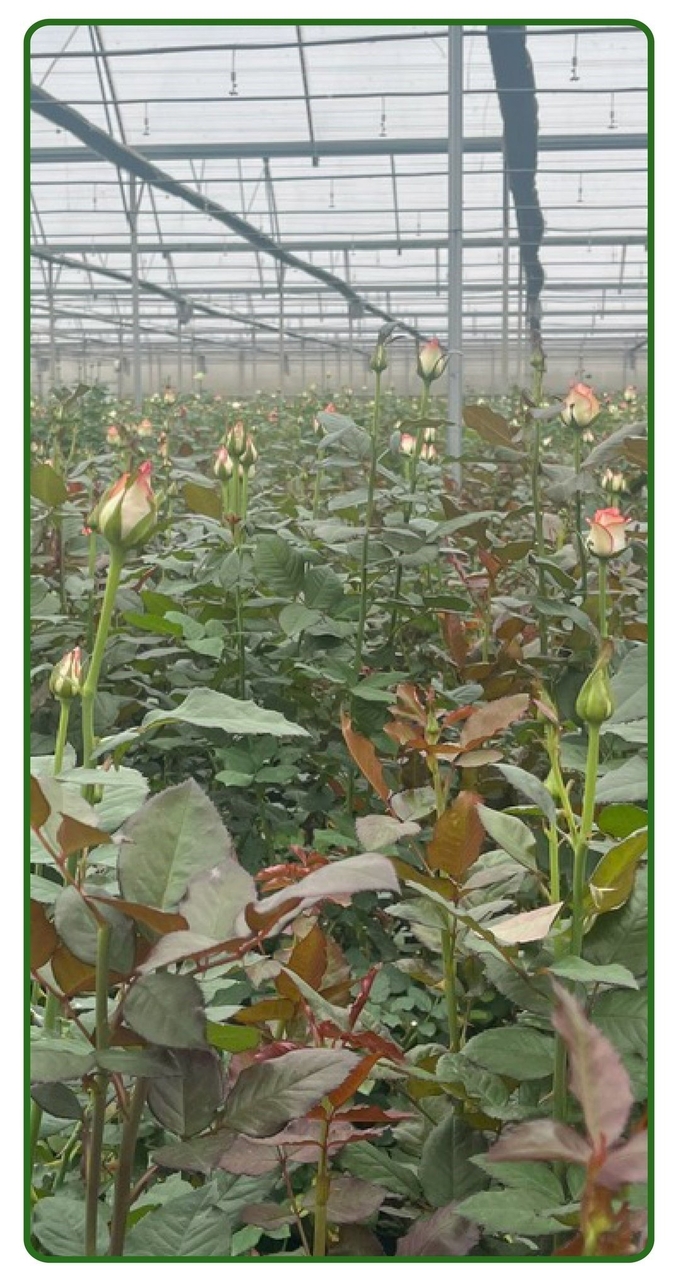
Smart agriculture in rose production.
Thus, in the face of increasingly extreme climate change and fierce competition in the global agricultural value chain, managers, scientists, enterprises, and farmers need to have new adaptive production thinking. The question is what relevant parties need to do and how to do it to have core solutions to synchronously promote four attributes of the agricultural ecosystem in order to proactively adapt to climate change and participate in the global agricultural value chain.
It is shown that the attributes of the agricultural ecosystem in Lam Dong are different from those of many other localities in the country. First, compared to 62 other provinces and cities in the country, Lam Dong is one of the localities with many agro-ecological sub-regions and space within a province, divided into 4 different agro-ecological sub-regions. Second, the terrain of agro-ecological sub-regions fluctuates greatly from 200m to 1,600m above sea level.
Third, Lam Dong is the province with the most agricultural products participating in the global value chain in the country, with over 12 agricultural products. Fourth, this is a pioneering locality in sustainable, high-tech agricultural production over the past 20 years, serving as a basis for the rapid development of smart agriculture and organic agriculture. Fifth, Lam Dong is the locality with the highest number of in vitro research and breeding facilities in the country, with about 60 facilities and an output of approximately 75 million seedlings, of which nearly 50% are exported.
Sixth, Lam Dong province is the locality with the most enterprises and areas recognized as high-tech agricultural production in the country. Seventh, the province is one of the localities with many rare medicinal gene sources that have high disease prevention and treatment value in accordance with the current trends of the global population. Eighth, farmers and enterprises have a spirit of hard work and creativity and quickly access new levels of domestic and international science and technology.
Nineth, taking advantage of its very high land potential, there is almost no abandoned land in Lam Dong. This especially creates a huge difference in productivity, with the highest amount of biomass created and revenue value per unit area over a time period in the country. Therefore, the average price of agricultural land in Lam Dong is the highest in the country, and the average price of agricultural land in Da Lat is the highest in the world.

Smart agriculture in potted flower production.
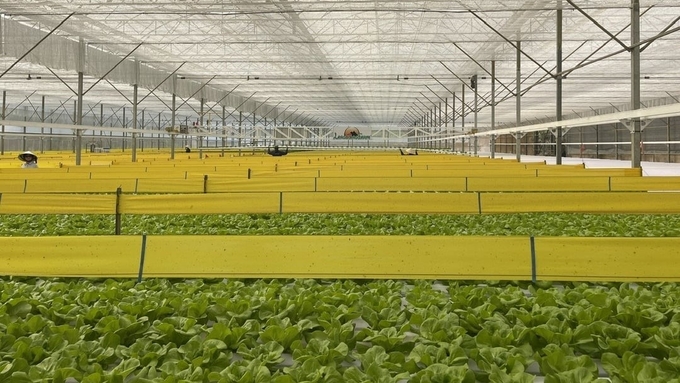
Smart and organic agricultural vegetable production.
In recent years, Lam Dong province has always had favorable policies for the agricultural sector to develop comprehensively in both width and depth, proactively adapt to climate change, and participate in the global agricultural value chain. By the end of 2023, there were 234 linkage chains in the entire province, including 112 inter-district chains and 122 inter-commune chains. The whole province currently has 135 projects to support the linkage chain, including 44 provincial-level projects and 91 district-level projects.
Chain linkages throughout the province have attracted and cooperated with 31,092 farmer households. The scale of linkage in crop production reached 52,897 ha (5.79% higher than the plan), with an output of 589,261 tons. Livestock farming reached 1,054,715 heads, with an output of 163,780 tons. By the end of 2023, the production value through the chain reached VND 18,046.952 billion at the 2010 fixed price and VND 30,862.243 billion at the current price, reaching about 35.41% of the total agricultural production value.
Promoting the development of agriculture in general, especially high-tech agriculture in particular, has been identified by Lam Dong province as a breakthrough for the province's socio-economic development. As of now, the province's high-tech agricultural area has reached 66,873 ha, accounting for 20.4% of the total farming land area, with 9 high-tech agricultural areas and 14 high-tech agricultural enterprises recognized. Replicating the multi-functional, multi-value agricultural model in the form of agricultural tourism, Lam Dong now has 36 agricultural tourism destinations, of which 4 sites meet international criteria.

High-tech application is diverse with many advanced techniques, including 46,920 ha of water-saving irrigation; 718 ha of vegetable and flower cultivation on growing media; 60 in vitro breeding facilities, annually supplying domestic and foreign markets with over 75 million in vitro seedlings of all kinds; and over 160 ha of imported greenhouses with modern technology worth over USD 1 million/ha. The process of sowing vegetable and flower seeds has been mechanized in the stages of washing trays, packing growing media, and sowing seeds by machine, increasing labor productivity by 5-7 times compared to manual work. Besides, 3-5-layer PE film technology is applied to 700 ha of greenhouses.
Smart agriculture has strong development in terms of crop and livestock scale, helping producers set up data on electronic software for factors of microclimate, environment, and plant nutrition, use electronic chips to monitor livestock health, and monitor and control with IoT sensor systems. In crop production, the whole province has over 465 ha of smart technology applications, focusing on vegetables, flowers, strawberries, and tea. Smart technology has helped producers reduce the amount of pesticides and fertilizers by 10–20%, reduce irrigation water and labor for farms by 30–50%, and increase profits by 15-20% compared to high-tech agricultural production.
In livestock farming, large enterprises have applied feed mixing combines using the TMR (Total Mixing Rotation) method, automatic feed pushing robots, rotary automatic milking systems, and attached SCR electronic chips for dairy cows. Applying smart technology helps crops and livestock grow optimally, yielding high productivity, safe products, and economic efficiency. Thereby, contributing to modernizing the province's agricultural sector.
High-tech agriculture and smart agriculture have contributed to bringing the province’s average production value per unit area to VND 245 million/ha, with many localities having high revenue, such as Da Lat of VND 480 million/ha/year, Lac Duong of VND 380 million/ha/year, and Don Duong of VND 250 million/ha/year. The area of high-tech agricultural production reaches an average of over VND 495 million/ha (vegetable production of over VND 2 billion/ha and flower production of VND 3-5 billion/ha). The proportion of high-tech and smart agricultural production value accounts for 45% of the total production value of the crop production industry.
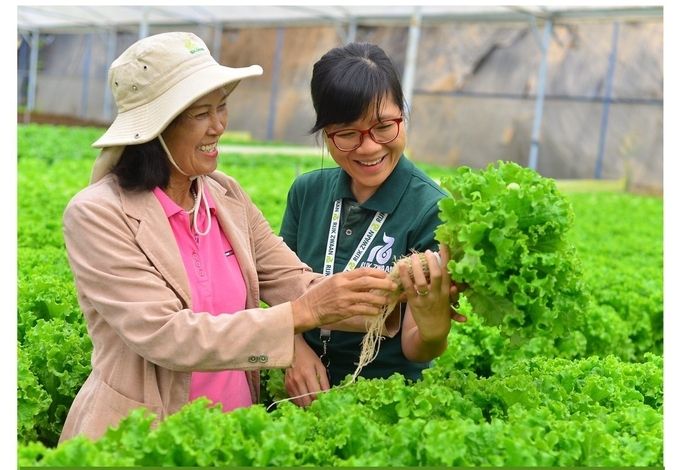
Differences in investment levels, cultivation levels, and production conditions between regions and localities are shortened, thanks to the application of high and modern technology. The area with a revenue of VND 1 billion/ha/year is increasingly expanding. The movement of good farmers in production and business has been widely promoted, and the number of good production and business households has increased year by year.
Lam Dong has also made progress in attracting investment in high-tech agriculture. Enterprises have invested, selected appropriate technology and equipment, built farming processes, and established standards and norms for high-tech agricultural production, such as biotechnology, information technology, drip irrigation technology, post-harvest technology, hydroponic technology, aeroponics technology, and IoT solutions.
As of now, the province has attracted 80 FDI enterprises and 1,550 domestic enterprises to invest in the fields of crop production, livestock farming, and aquaculture, with about 150 agricultural cooperatives applying high technology. In fact, many high-tech agricultural enterprises have appeared, such as Dalat Hasfarm Company, Langbiang Farm Company, Vinamil, Bijo, etc., with annual revenue reaching VND 1-3 billion/ha and exporting goods to many demanding markets around the world, such as Japan, Russia, South Korea, Australia, Singapore, and the Halla market.
Continuing to promote the potential and comparative advantages of the agricultural ecosystem, in the coming time, Lam Dong province will deploy breakthrough agricultural solutions to adapt to climate change and participate in the global agricultural value chain, as follows:
1. Continue to invest in comprehensive, modern, multi-functional, multi-value agriculture on the basis of high-tech agriculture, smart agriculture, organic agriculture, regenerative agriculture, and circular agriculture based on innovation;
2. Apply advanced and modern technological solutions for the research and production of new crop varieties and crop varieties with high drought resistance; continue to convert crops and livestock to optimally exploit the productivity attribute in the agricultural ecosystem;
3. Continue to promote the project of digging small ponds and lakes to store water and maintaining over 450 existing irrigation reservoirs; continue to invest in large-scale multi-purpose irrigation reservoirs such as Dong Thanh, Ta Hoet, and Kazam lakes to be proactive about water sources for agriculture in the dry season;
4. Maximize resources and diversify forms of scientific research; encourage organizations and individuals to research and propose highly practical scientific topics for agricultural production in the context of climate change and international integration; take science and technology as a breakthrough in the global agricultural value chain;

5. Accelerate the progress of afforestation and tree planting according to Plan 2209/KH-UBND in 2021 on planting 50 million trees in Lam Dong province in the 2021-2025 period to improve the rate of forest coverage; improve the agricultural and rural landscape and ecological environment;
6. Continue to promote domestic and foreign trade; promote policies to support enterprises in science and technology, innovation, production linkages, intellectual property, etc. to create the most favorable conditions for enterprises to expand markets and participate in the global agricultural value chain;
7. Strengthen international cooperation and attract FDI enterprises to invest in a number of fields that Lam Dong needs to call for investment, such as: Animal Feed Production Project; Project to process agricultural products according to Halal standards; Project to research and breed high-quality and drought-resistant crops; Strategic Cooperation Project to connect the consumption of Lam Dong province's agricultural products in foreign markets, forming a large-scale, high-quality, and food-safe global agricultural value chain.
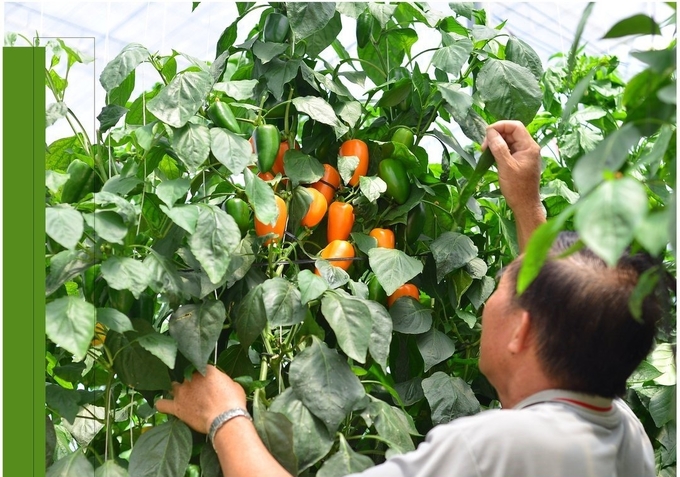
In recent times, Lam Dong province has had many policies to enrich the attributes of the agricultural ecosystem, especially productivity. In the coming time, the province will continue to invest in human resources, science and technology, research, and innovation to synchronously promote the attributes of the agricultural ecosystem; and implement breakthrough solutions for the Lam Dong agricultural sector to adapt to climate change and participate in the global agricultural value chain.
Translated by Thu Huyen
![Reducing emissions from rice fields: [Part 1] Farming clean rice together](https://t.ex-cdn.com/nongnghiepmoitruong.vn/608w/files/news/2025/05/05/z6509661417740_a647202949c539012a959e841c03e1d3-nongnghiep-143611.jpg)
(VAN) Growing clean rice helps reduce environmental pollution while increasing income, allowing farmers to feel secure in production and remain committed to their fields for the long term.
/2025/05/19/5136-1-144800_230.jpg)
(VAN) The Nghe An Provincial People's Committee has just approved the list of beneficiaries eligible for revenue from the Emission Reductions Payment Agreement (ERPA) in the North Central region for the year 2025.

(VAN) 14 out of 35 domesticated elephants in Dak Lak province have had their living conditions improved, with 11 of them currently participating in the non-riding elephant tourism model.

(VAN) Muong Nhe Nature Reserve hopes that being upgraded to a national park will lay the foundation for forest protection efforts to be carried out in a systematic, modern, and sustainable manner.
/2025/05/16/3923-2-171845_52.jpg)
(VAN) Lower costs, higher yields, and improved soil quality are outstanding benefits that soybeans bring when integrated into the crop rotation system.
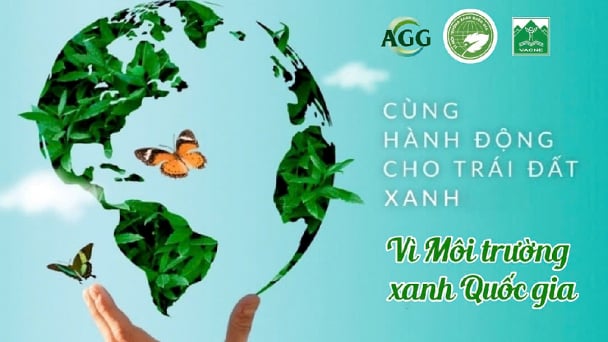
(VAN) The 'For a Green National Environment' programme aims to promote a green lifestyle, support businesses in implementing ESG practices, and turn Net Zero commitments into concrete actions.

(VAN) Cold-barn systems efficiently manage environmental and temperature conditions, which aids in the prevention of respiratory diseases in pigs and protects them from the vectors that transmit African swine fevers.